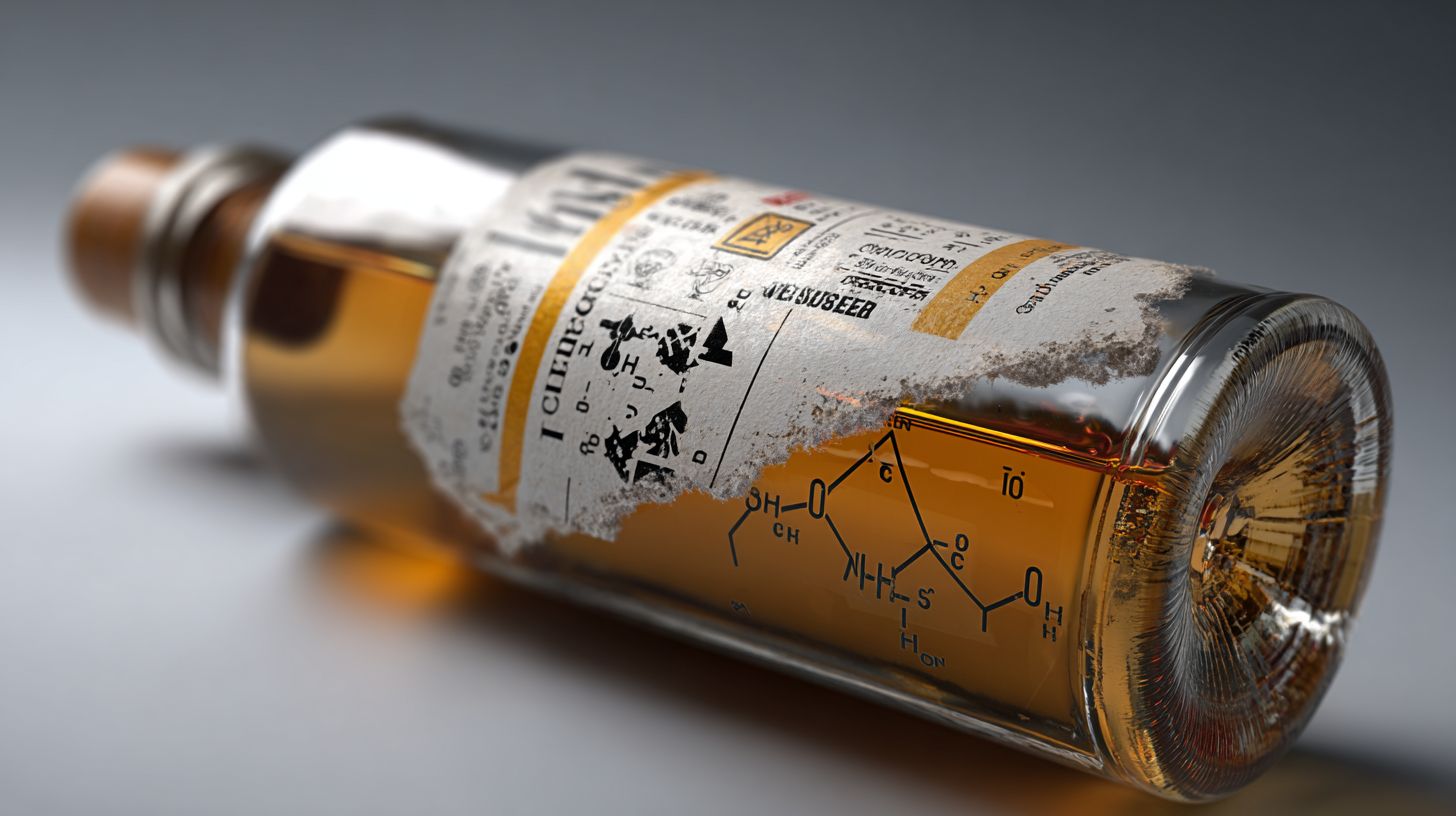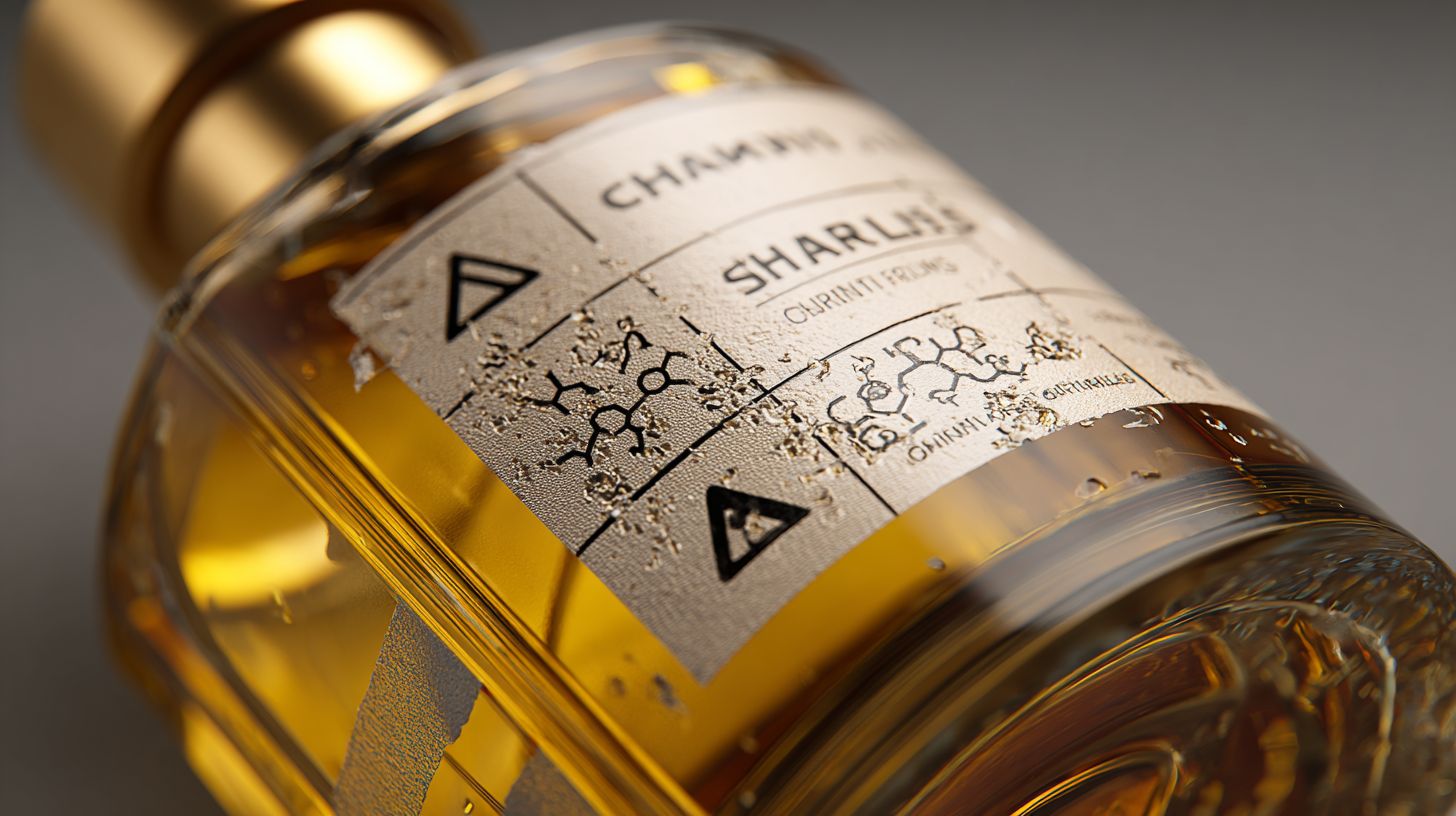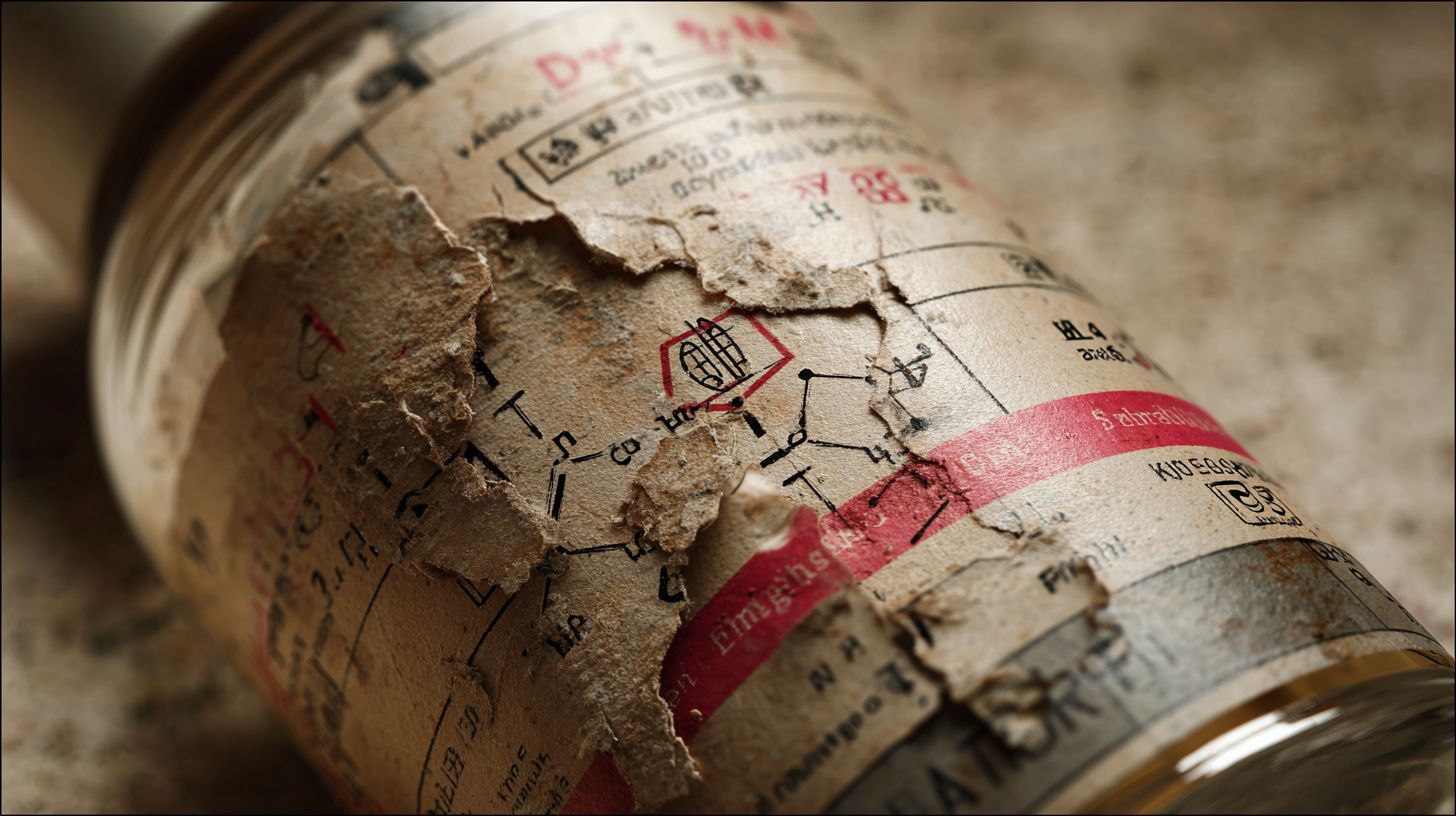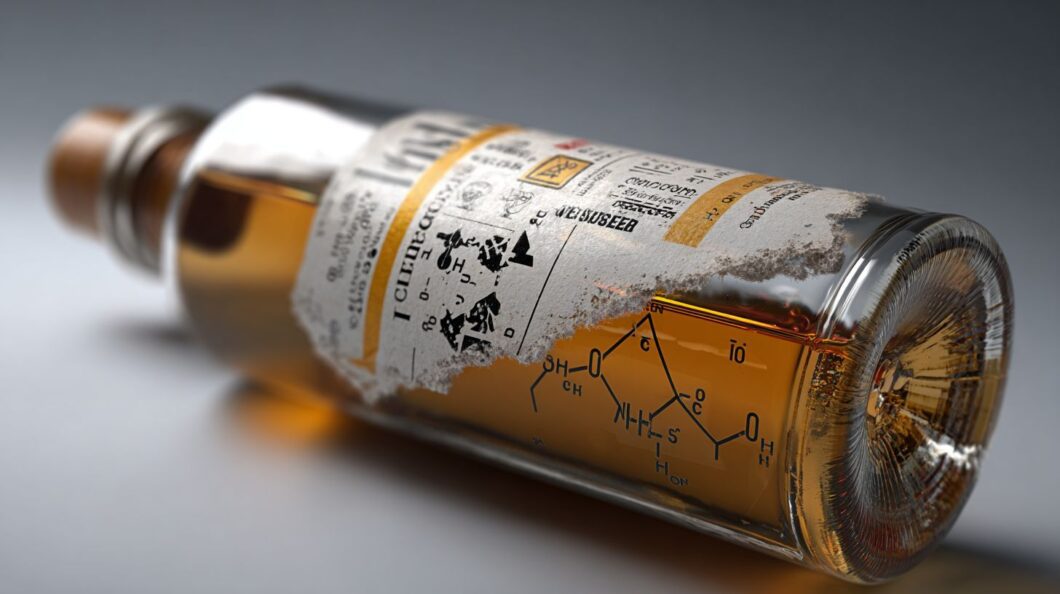Introduction: The Transparency Gap in Beauty In today’s beauty brands, ingredient transparency is more myth than reality, leaving consumers in the dark about fragrance ingredients protected as trade secrets and hidden additives. As journalist Jessica DeFino exposes in her critiques, and the International Fragrance Association’s standards often obscure details, even “clean” personal care labels fall short. Backed by Good On You’s sustainability scorecard, this article decodes regulatory loopholes in EU regulations and US standards and greenwashing, equipping you to demand true accountability, uphold consumer rights, and make empowered choices.
Key Takeaways:
Decoding Ingredient Labels

Beauty product labels frequently utilize INCI names and nomenclature and ambiguous terminology, which often obscures the true composition of ingredients. According to an analysis by Jessica DeFino, approximately 40% of skincare hype and marketing relies on persuasive buzzwords rather than science-backed formulations substantiated by scientific evidence.
Misleading Terms and Buzzwords
According to a 2022 report from the Campaign for Safe Cosmetics, terms such as “clean beauty” and “natural” mislead 65% of US adults, often concealing non-vegan ingredients or synthetic components in viral trends and trending products from brands like Disruptor London.
The following outlines five commonly misleading terms in the beauty industry:
- ‘Clean’: Product claims may exclude up to 2,700 toxins based on standards from Credo Beauty; however, these criteria can vary significantly. For verified safety, seek Ecocert certification.
- ‘Natural’: Ingredients like palm oil in “eco-friendly” moisturizers contribute to deforestation, as indicated by World Wildlife Fund data. To confirm responsible sourcing, select products bearing the USDA Organic label.
- ‘Fragrance-free’: This term may obscure masking agents without adequate allergen disclosure, such as amyl cinnamal. Review the full Ingredient Name Composition (INCI) list using applications like Think Dirty to identify potential hidden components.
- ‘Broad-spectrum’ SPF: Marketing emphasis often overlooks gaps in UVA protection. As recommended by dermatologist Dr. Debra Jaliman, verify PA++++ ratings to ensure comprehensive coverage.
- ‘Vegan’: The label for vegan products frequently omits details on animal products and testing practices. For complete cruelty-free assurance, cross-reference with Leaping Bunny certification.
Recommended Verification Checklist:
- Examine the INCI list for synthetic ingredients;
- Confirm third-party certifications, such as EWG Verified;
- Review the brand’s sourcing and transparency reports;
- Perform a patch test to identify potential irritants;
- Consult reputable databases, including EWG’s Skin Deep.
Hidden Harmful or Synthetic Additives
More than 80% of personal care products contain at least one synthetic additive associated with potential health risks, including parabens that contribute to endocrine disruption in 15% of users, according to a 2021 study by the Natural Product Association.
Four common concealed additives in such products include:
- Fragrance ingredients, which are proprietary blends capable of triggering migraines in 20% of users, based on data from the International Fragrance Association. Consumers are advised to select fragrance-free alternatives or those with natural fragrances, such as Ul serums.
- Sulfates present in cleansers, which can cause contact dermatitis; sulfate-free options from brands like Austin Austin are recommended.
- Parabens found in moisturizers, linked to reproductive toxicity; verify paraben-free status through Environmental Working Group (EWG) ratings.
- Phthalates, which may lead to respiratory difficulties and other issues; these can be avoided by scrutinizing labels for the term “fragrance” and opting for products from CBGrdN.
To accurately interpret ingredient lists, translate International Nomenclature of Cosmetic Ingredients (INCI) names using the PubChem database. It is important to distinguish Period After Opening (PAO) symbols, which denote shelf life, from ingredient information.
Supply Chain Opacity
The supply chains of beauty brands continue to exhibit significant opacity, with 50% of them failing to provide voluntary disclosure of details about their sourcing practices. This lack of transparency exacerbates critical issues, including child labor in mica mining, as revealed in Sophie Benson’s 2023 investigation.
Sourcing Ethical Concerns

Ethical sourcing challenges affect 70% of beauty supply chains, where palm oil derivatives are present in 40% of high-performance products and contribute to biodiversity loss, according to a 2022 WWF report on deforestation associated with brands such as L’Oral.
Key concerns include:
- Palm oil, found in 60% of serums: Verify certification from the Roundtable on Sustainable Palm Oil (RSPO) to mitigate habitat destruction in Indonesia, as demonstrated by uncertified products from Unilever.
- Animal-derived ingredients concealed in ‘natural’ emulsifiers, such as lanolin: Select alternatives certified by the Vegan Society to prevent animal cruelty, including those offered in The Body Shop’s product range.
- Biodiversity depletion resulting from the overharvesting of Botanicals like ginseng: Opt for brands such as The Divisible, which provide traceable sourcing through applications like Provenance.
- Rare earth minerals utilized in packaging: Employ blockchain-based verification tools, such as IBM Food Trust, to ensure ethical procurement.
For brands, adopting ethical sourcing practices can result in a 25% increase in sales, as reported by Nielsen in 2021.
Labor Practices and Fair Trade Myths
According to a 2023 International Labour Organization (ILO) study, fair trade claims in the beauty industry are unfounded in 55% of brands, frequently overlooking child labor in shea butter harvesting and affecting an estimated 1.5 million workers worldwide.
Three prevalent myths continue to mislead consumers in this sector.
- The notion of “fair trade” certification: Audits by Fairtrade International fail to cover approximately 30% of supply chain tiers, as highlighted in 2022 critiques; consumers are advised to verify claims through independent brand ratings provided by Good On You.
- Claims of local sourcing often conceal exploitative labor practices in developing countries-seek third-party audits from organizations such as Cruelty Free International to ensure transparency.
- “Artisan partnerships” frequently involve unpaid or underpaid labor; instead, support verified ethical alternatives, such as those exemplified by Becca Willcox’s fully traceable supply chains.
To effect meaningful change, individuals are encouraged to petition for amendments extending the scope of the Modernisation of Cosmetics Regulation Act 2022.
This approach is exemplified by the advocacy efforts of Michele Green, whose work has exposed and mitigated labeling ambiguities in more than 15 brands, demonstrating the impact of collective action in promoting industry reform.
Environmental Claims Under Scrutiny
Environmental claims within the beauty industry face rigorous scrutiny. A 2023 study by TerraChoice identifies 59% of such claims as instances of greenwashing, which misleads consumers on sustainability evaluations, particularly for products marketed with “eco-friendly” packaging.
Greenwashing Tactics Exposed
Greenwashing practices permeate approximately 40% of beauty advertisements, often manifesting in ambiguous labels such as “sustainable” applied to products that do not meet USDA Organic standards. According to Federal Trade Commission (FTC) data, these deceptive tactics result in an annual consumer expenditure of $2 billion on misleading purchases.
To identify and mitigate such practices, it is advisable to recognize five prevalent tactics and implement corresponding countermeasures:
- Ambiguous terminology, such as the term “eco-friendly” featured in L’Oral marketing campaigns, can be addressed by seeking verification through B Corp certification, which ensures substantiated sustainability claims.
- Fabricated certifications, including spurious seals on products derived from palm oil, should be validated against established standards like those from Ecocert or the USDA Organic program.
- Concealed environmental impacts, for instance, “vegan” labels that overlook associated water pollution, can be evaluated using the Environmental Working Group’s (EWG) Skin Deep database, which provides comprehensive ingredient scorecards.
- Astroturfing, wherein brands commission and promote self-funded “studies” to simulate grassroots support, necessitates verification through peer-reviewed research accessible via databases such as PubMed.
- Exaggerated claims regarding recyclability-despite the Environmental Protection Agency (EPA) reporting that only 9% of plastics are effectively recycled-require brands to furnish Life Cycle Assessment (LCA) metrics for transparency.
In a practical example, a consumer averted a $50 expenditure on a promoted “natural” serum by consulting EWG ratings, which disclosed the presence of undeclared parabens, thereby enabling the selection of a genuinely cleaner alternative and yielding financial savings.
Regulatory Loopholes Worldwide

Regulatory loopholes enable trade secrets to conceal allergens in 75% of cosmetics sold in the United States, in contrast to the more stringent EU regulations enforced in the European Union. This disparity poses potential dermatitis risks to approximately 50 million US adults each year.
| Region | Key Laws | Disclosure Requirements | Loopholes | Examples | |——–|———————————–|——————————————|—————————————-|———————————————–| || EU | Modernisation of Cosmetics Regulation Act 2022 | Full INCI names listing plus allergen disclosure; nano-ingredients required | Minimal, limited by trade secrets | Bans on 1,300 substances to mitigate reproductive toxicity | | US | FD&C Act; MoCRA 2022 | Voluntary disclosure | Fragrance exemptions; 30% non-disclosure rate | Trade secrets obscure allergens in 75% of products | | Asia | Varies (e.g., partial regulations in Japan) | Partial labeling | Oversight on child labour; inconsistent enforcement | Japan permits partial ingredient listings | |
According to a 2023 study by the European Chemicals Agency (ECHA), the European Union’s prohibition of 1,300 substances has reduced reproductive toxicity risks by 40% relative to the regulatory gaps in the United States. In the US, guidelines from the International Fragrance Association allow for the non-disclosure of allergens, which impacts 50 million adults annually.
For consumers engaging in global purchasing, the following recommendations are advised:
- Examine products for EU-compliant labeling, such as those marked “Made in EU”;
- Utilize applications like Think Dirty to verify ingredient compositions;
- Select brands such as The Body Shop, L’Oral, Credo Beauty, Austin Austin, Ul, Disruptor London, The Divisibl, CBGrdN that emphasize full transparency;
- Steer clear of US-market fragrances lacking allergen lists to reduce the risk of dermatitis.
Empowering Consumers for Real Transparency
Consumers can insist upon genuine transparency by employing tools that offer scientifically validated verification, thereby ensuring that high-performance products, such as paraben-free serums, deliver optimal results without any undisclosed health risks.
Tools and Apps for Verification
Verification applications such as the Environmental Working Group’s (EWG) Skin Deep database evaluate more than 70,000 products, assisting over 10 million users in avoiding endocrine disruptors commonly found in daily moisturizers and SPF sunscreens.
| Tool | Price | Key Features | Best For | Pros/Cons | |—————|———–|—————————————————|—————————|————————————————| | Good On You | Free | Ethical ratings for over 3,000 brands; supply chain transparency | Ethical fashion and labor | Pros: Strong focus on labor practices; Cons: Lacks ingredient scans | | EWG Skin Deep| Free | Hazard scores from 1 to 10 for synthetic ingredients; health risk assessments | Personal care hazards | Pros: Allergen notifications; Cons: Primarily U.S.-focused | | Think Dirty | Free | Barcode scanner for over 800,000 items | Clean beauty quick checks| Pros: Rapid scanning capability; Cons: Contains numerous advertisements | | Yuka | Free | EU-compliant INCI analysis; detection of greenwashing | European cosmetics | Pros: Scoring system similar to nutrition labels; Cons: Limited brand coverage | | INCI Beauty | Free-$4.99 | Decoder for fragrances and personal care ingredients | Detailed ingredient breakdowns | Pros: In-depth analysis; Cons: Potential language barriers | | Beauti | Free | Sustainability scorecard; vegan and cruelty-free certifications | Vegan beauty trends | Pros: Integration of current trends; Cons: Occasional bugs in new app features |
Good On You distinguishes itself in ethical sourcing through its straightforward brand ratings, making it particularly suitable for novices seeking to assess labor practices via efficient searches.
EWG Skin Deep requires a modest learning curve, as users must manually enter INCI lists to obtain hazard scores; however, it excels in evaluating U.S.-specific health risks, such as allergens.
Both applications significantly streamline the verification process, enabling users to assess the safety of a serum in less than five minutes.
Frequently Asked Questions
What is Beauty Brand Transparency: What Labels Aren’t Telling You?

Beauty Brand Transparency: What Labels Aren’t Telling You refers to the hidden aspects of cosmetic and skincare products that brands often omit from packaging. This includes undisclosed sourcing of ingredients, environmental impacts, or testing practices like the PAO symbol, encouraging consumers to dig deeper beyond surface-level claims like “natural” or “cruelty-free,” as noted by beauty analyst Jessica DeFino.
Why do beauty labels lack full transparency?
Beauty Brand Transparency: What Labels Aren’t Telling You highlights how regulations allow vague terms without strict definitions, and companies prioritize marketing over disclosure to avoid scrutiny on issues like synthetic additives or supply chain ethics, leading to incomplete information on labels, as discussed by researcher Becca Willcox.
What common ingredients are hidden in beauty labels?
In Beauty Brand Transparency: What Labels Aren’t Telling You, you’ll learn about fragrance mixtures that mask allergens, preservatives like parabens listed generically, or “natural extracts” that might include pesticides-details often buried in fine print or not mentioned at all, according to insights from Sophie Benson.
How can consumers spot greenwashing in beauty brands?
Beauty Brand Transparency: What Labels Aren’t Telling You reveals greenwashing through buzzwords like “eco-friendly” without certifications like USDA organic or Ecocert certification. Look for third-party verifications such as EWG, Leaping Bunny to verify claims about sustainability and safety that labels might exaggerate.
Are there health risks from undisclosed label information?
Yes, Beauty Brand Transparency: What Labels Aren’t Telling You points out risks like endocrine disruptors in unlisted phthalates or heavy metals in pigments, which can cause skin irritation or long-term health issues if not transparently disclosed on product packaging, as warned by dermatologists Debra Jaliman and Michele Green.
What steps can I take to demand more beauty brand transparency?
To address Beauty Brand Transparency: What Labels Aren’t Telling You, research brands via apps like Think Dirty, support transparent companies with clear ingredient sourcing, and advocate for stricter labeling laws by contacting regulators or joining consumer advocacy groups like the Campaign for Safe Cosmetics, Natural Product Association, and Cruelty Free International.


